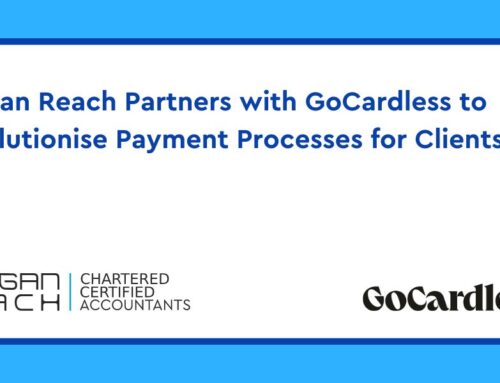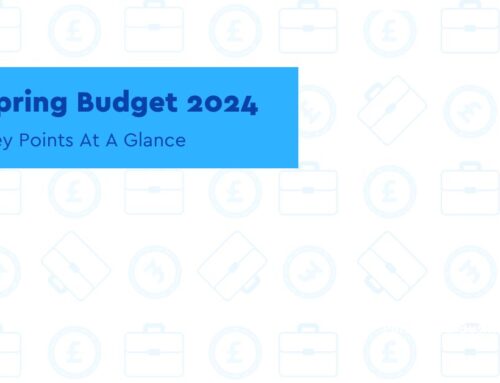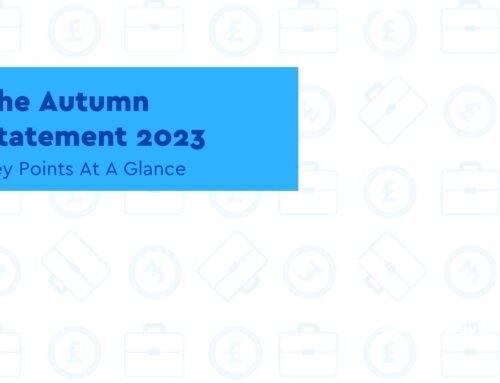News – Tax Breaks
Venture capital tax breaks to be reviewed
Key Points
- The Treasury committee plans to look at the current tax incentives and consider any options for change
- These include enterprise investment scheme and venture capital trusts
The Treasury Committee has launched an inquiry into the venture capital industry to discuss its effectiveness and how further innovations can be made.
The committee plans to look at the current tax incentives, which include the enterprise investment scheme (EIS), seed enterprise investment scheme (SEIS), and venture capital trusts (VCTs), and consider any options for change.
It also plans to consider the role of key bodies in the industry, such as the British Business Bank and the Advanced Research and Invention Agency.
The move by the Government comes as it works towards achieving carbon net zero and seeking to pioneer more British innovation in science and technology.
In the March 2022 Spring Statement, the Chancellor announced that research and development tax breaks would be reformed over the next few years. By 2024, the Government aims to increase R&D spending by £5 billion, making the combined funding worth £20bn.
Mel Stride, chair of the committee, said:
“Venture capital has a key role in ensuring innovative UK firms prosper, and we want to make sure the market is working well.
“The Government’s plan to enable the UK to continue advancing the frontiers of science and technology, as well as its ambitions on net zero and levelling up, will be boosted if businesses are able to finance their work to achieve international success.”
The Enterprise Investment Scheme (EIS)
EIS is designed so that your company can raise money to help grow your business. It does this by offering tax reliefs to individual investors who buy new shares in your company.
Under EIS, you can raise up to £5 million each year, and a maximum of £12 million in your company’s lifetime. This also includes amounts received from other venture capital schemes. Your company must receive investment under a venture capital scheme within 7 years of its first commercial sale.
You must follow the scheme rules so that your investors can claim and keep EIS tax reliefs relating to their shares. Tax reliefs will be withheld or withdrawn from your investors if you do not follow the rules for at least 3 years after the investment is made.
There are different rules for knowledge-intensive companies that carry out a significant amount of research, development or innovation, and either:
- Want to raise more than £12 million in the company’s lifetime
- Did not receive investment under a venture capital scheme within 7 years of their first commercial sale
Your company can use the scheme if it:
- Has a permanent establishment in the UK
- Is not trading on a recognised stock exchange at the time of the share issue and does not plan to do so
- Does not control another company other than qualifying subsidiaries
- Is not controlled by another company, or does not have more than 50% of its shares owned by another company
- Does not expect to close after completing a project or series of projects
Your company and any qualifying subsidiaries must:
- Not have gross assets worth more than £15 million before any shares are issued, and not more than £16 million immediately afterwards
- Have less than 250 full-time equivalent employees at the time the shares are issued
- Your company must carry out a qualifying trade. If you’re part of a group, the majority of the group’s activities must be qualifying trades.
The Seed Enterprise Investment Scheme (SEIS)
SEIS is designed to help your company raise money when it’s starting to trade. It does this by offering tax reliefs to individual investors who buy new shares in your company.
You can receive a maximum of £150,000 through SEIS investments. This will:
- Include any other de minimis state aid received in the 3 years up to and including the date of the investment
- Count towards any limits for later investments through other venture capital schemes
- There are various rules you must follow so your investors can claim and keep SEIS tax reliefs relating to their shares
Tax reliefs will be withheld, or withdrawn, from your investors if you do not follow the rules for at least 3 years after the investment is made.
Companies that can use the scheme
Your company can use the scheme if it:
- Carries out a new qualifying trade
- Is established in the UK
- Is not trading on a recognised stock exchange at the time of the share issue
- Has no arrangements to become a quoted company or a subsidiary of one at the time of the share issue
- Does not control another company unless that company is a qualifying subsidiary
- Has not been controlled by another company since the date of your company being incorporated
Your company and any of its subsidiaries must:
- Not have gross assets over £200,000 when the shares are issued
- Not be a member of a partnership
- Have less than 25 full-time equivalent employees in total when the shares are issued
If you’ve received investment through the Enterprise Investment Scheme (EIS) or from a venture capital trust, you cannot use SEIS.
About the investment
The shares you issue must meet the same requirements as shares issued under EIS.
The money you raise from the investment must be spent within 3 years of the share issue.
You must spend the money on either:
- A qualifying trade
- Preparing to carry out a qualifying trade
- Research and development that’s expected to lead to a qualifying trade
You cannot use the investment to buy shares, unless the shares are in a qualifying 90% subsidiary that uses the money for a qualifying business activity.
Venture Capital Trusts (VCTs)
A VCT is a company that has been approved by HMRC and invests in, or lends money to, unlisted companies.
A VCT may invest in your company if it has:
- No more than £15 million in gross assets
- Less than 250 employees
- Not been more than 7 years since its first commercial sale
There may be higher limits if your company carries out research, development or innovation and meets certain conditions.
The VCT scheme is designed to encourage investment in small unquoted companies. Individuals invest by holding shares in a VCT. The VCT invests in a spread of small unquoted companies, enabling investors to spread their risk, just as they do by holding shares in an ordinary investment trust company.
An approved VCT has a number of tax advantages:
- The VCT is itself exempt from CT on chargeable gains (and losses for chargeable gains purposes are not allowable losses)
- Individual investors can claim ‘front-end’ income tax relief on subscriptions of up to £200,000
- Individual investors are exempt from income tax on dividends in respect of ordinary shares acquired within the ‘permitted maximum’ of £200,000, and individual investors are exempt from CGT on the disposal of ordinary shares acquired within the ‘permitted maximum’ of £200,000
This article was sourced from Practice Web and Gov.uk
News – Tax
Treasury minister sets out tax priorities
The digitisation of the tax authority is a key priority with Making Tax Digital being ramped up by 2024, although businesses will not have to report corporation tax via the system until at least 2025.
Key Points
- It was confirmed at a tax reform conference that MTD is central to the Treasury’s reform strategy
- The government is reviewing the current operation of the apprenticeship levy to incentivise businesses
The key issue on the reform agenda is the further rollout of Making Tax Digital with its extension to income tax reporting, particularly for landlords and sole traders from 2024.
Lucy Frazer, financial secretary to the Treasury, told delegates at a tax reform conference organised by think tank Bright Blue: ‘Also central to our strategy is Making Tax Digital. MTD is designed to reduce taxpayer mistakes, and therefore the Exchequer losses resulting from them, but it also acts as a catalyst for businesses to become more digital.
‘The first stage of Making Tax Digital – which focused on VAT – launched in April 2019. As of this month, we’ve extended MTD to all VAT registered businesses.
‘We’re also keen to make progress on making income tax digital, which will come into force for landlords and sole traders with income over £10,000 from April 2024.’
The digitisation of the tax reporting system should reduce error levels, according to HMRC, raising revenue levels as a result.
Clamping down on tax avoidance remains a priority for the government. Since 2010, the Conservative government has introduced over 150 measures to tackle tax avoidance, evasion and other forms of non-compliance. Those measures, alongside HMRC’s wider work, have secured and protected over £250bn for public services over the last 12 years.
‘We’re not at all complacent about this,’ said Frazer. ‘Since last year we’ve introduced an additional 20 measures to tackle tax avoidance, evasion and non-compliance – forecast to raise an estimated £6.3bn over the next five years,’ she said.
‘These include implementing Making Tax Digital, our reimagining of the way businesses keep their records and submit their tax returns.
‘We’re also focused on delivering a trusted, modern, digital tax administration system for businesses and their agents to help them get their tax right the first time.’
During her speech, Frazer also focused on education and training, hinting that the government is reviewing the current operation of the apprenticeship levy.
Frazer said: ‘We’re considering whether further intervention is needed to encourage employers to offer the high-quality employee training the UK needs… examining whether the current tax system – including the operation of the Apprenticeship Levy – is doing enough to incentivise businesses to invest in the right kinds of training.
‘The truth is that not enough companies are taking full advantage of the Levy.
‘So, we’re helping companies to not only invest in apprenticeships across their own workforce but to also transfer levy funds to support other smaller firms, benefitting local areas and the wider economy.
‘It’s been brilliant to see examples of levy transfers going to schools and further education colleges, too – supporting training for teachers and teaching assistants but also STEM apprenticeships.’
Support for innovation, and research and development, was another area of focus.
‘Looking ahead, the government has an ambitious target to raise total investment in R&D to 2.4% of UK GDP by 2027.
‘We’ve already set out a series of initial measures to reform the R&D tax relief system including the expansion of qualifying expenditures to cover data and cloud computing costs, as well as refocusing R&D relief on activity carried out in the UK.
‘And we’re reviewing R&D tax reliefs further – to ensure, among other things, that the UK remains a competitive location for world-class research – and we expect to announce our next steps in the Autumn.’
‘Again and again, companies tell us that reliefs are a critical enabler of their R&D, improving their cash flow and enabling them to reinvest more in developing new ideas each year.’
This article was sourced from Financial Accountant: https://www.financialaccountant.co.uk/news/treasury-minister-sets-out-tax-priorities
News – Pension
HMRC to update guidance for minimum state pension age
Key Points
- In 2014, the government announced it would increase the NMPA to age 57 in 2028
- This was to coincide with the rise of state pension age to 67
The government will update the pensions tax manual “at the earliest opportunity” to reflect the changes to the normal minimum pension age (NMPA) from 2028.
Economic secretary to the Treasury and MP John Glen made the disclosure to parliament recently while responding to a question put forward by Labour MP for Reading East Matt Rodda.
Glen told MPs that the changes will reflect the protection regime that will apply to those with an unqualified right to access their savings before the NMPA rises to 57 in 2028.
The NMPA was first introduced in 2006 at age 50 and later raised to age 55 in 2010. In 2014, the government announced it would increase the NMPA to age 57 in 2028 to coincide with the rise of state pension age to 67.
The government enacted the Finance Act 2022 to provide a framework of protections and increase the NMPA from age 55 to 57.
The legislation will now protect members of registered pension schemes who before 4 November 2021 have a right to take their entitlement to benefit under those schemes at or before the existing NMPA.
It exempts members of the firefighters, police and armed forces public service schemes and for protected members it reduces the restrictions on retaining a protected pension age following a block or individual transfer.
An HMRC spokesperson said: “There is no fixed date at the moment, but the update is being worked on and will be published at the earliest opportunity, as said in the response to the Parliamentary Question.”
This article was sourced from Money Marketing: https://www.moneymarketing.co.uk/news/hmrc-to-update-guidance-for-minimum-state-pension-age/
News – Stamp Duty
Call for stamp duty reform as receipts reach fresh high
Key Points
- Around 1.37 million property transactions were carried out in 2021/22
- This level of activity and interest in purchasing property has in turn pushed house prices ever higher
The amount paid in stamp duty over the last year has hit a record high of £18.6bn.
Overall receipts for stamp duty between April 2021 and March 2022 was up by £6.1bn on the previous tax year, according to data from HM Revenue and Customs (HMRC).
The jump in stamp duty receipts for the taxman is partly due to high activity levels in the property market, initially driven by the stamp duty holiday. Provisional estimates for the tax year revealed that around 1.37 million property transactions were carried out in 2021/22, the highest figure seen in at least a decade
This level of activity and interest in purchasing property has in turn pushed house prices ever higher, with the latest data from the Office for National Statistics showing that the average property is now worth £277,000, having jumped 10.9% over the last 12 months.
Time for stamp duty reform
Jonathan Stinton, head of intermediary relationships at Coventry Building Society, said the stamp duty holidays over the last year had “distorted” the market, pushing prices higher and resulting in larger receipts for the Treasury than ever before.
He said: “We still expect stamp duty receipts will return to the long-term trend of steady increases over time in the coming months. And, with average house prices still on the rise, the Treasury will continue to bring in billions, adding substantially to the cost of moving home.”
Stinton suggested that these receipts meant that the need for stamp duty to be reviewed and reformed was now “even more apparent”.
Other tax receipts rising too
The increase in house prices has not just meant a higher stamp duty take, but also a jump in inheritance tax receipts.
The amount paid in inheritance tax in the last tax year rose by £700m to £6.1bn, the figures show
As house prices have grown, it has meant that increasing numbers of people have estates worth more than the current £325,000 inheritance tax threshold, and so have found they are liable for the tax.
This article was sourced from Practice Web
Latest Snippets
Tax guidance on electronic payment of tips
HMRC’s guidance on the taxation of tips, gratuities, service charges, and troncs has been updated to include information on how to manage electronic payments.
The new guidance indicated that where the employer collects the tips and pays them to employees, the employer is required to deduct income tax and NIC from these payments.
Where customers pay tips directly to staff, each employee is responsible for declaring these earnings to HMRC. Any taxes owed will most likely be recovered through a change in the employee’s tax code. Customers’ direct payments are not subject to NIC.
Payments done with ‘troncs’ have their own set of rules (a special pay arrangement used to distribute tips, gratuities, and service charges where a person other than the employer is responsible for sharing the amounts). These are also covered in HMRC’s new guidelines.
Interest rate increases to 13-year-high
Interest rates have increased to 1% from 0.75%, their highest level since 2009 and the fourth consecutive increase since December.
The Monetary Policy Summary (MPC) voted on May 4, 2022 by a majority of 6-3 to increase the rate by 0.25%.
The Bank of England said it expects the consumer price index (CPI) to rise even further over the course of the year, with inflation already hitting a 30-year-high of 7% in March this year.
The expected figures indicate CPI inflation will rise to just over 9% in Q2 and then to slightly over 10% in Q4.
With utility and energy bills also rising over the year, the Bank foresees further challenges to UK households. Higher taxes, energy costs and interest rates are likely to depress household spending throughout the rest of the year.
The increase in interest rates will also mean higher mortgage payments for more than two million households in the UK with variable rate mortgages. Further increases to loans will see consumers having less to spend overall.
Get In Touch
At Morgan Reach, we understand every business needs a little help now and again-especially when it comes to the financial side of things. Therefore, to help our clients and visitors we endeavour to cover as much of the business news as possible. If you are self-employed or run a business and need assistance and advice on how these news could make a difference to you or your business, feel free to get in touch with the experts at Morgan Reach. Our business growth experts at Morgan Reach will guide you through what support is available for you or your business as well as the latest news that may affect you.







